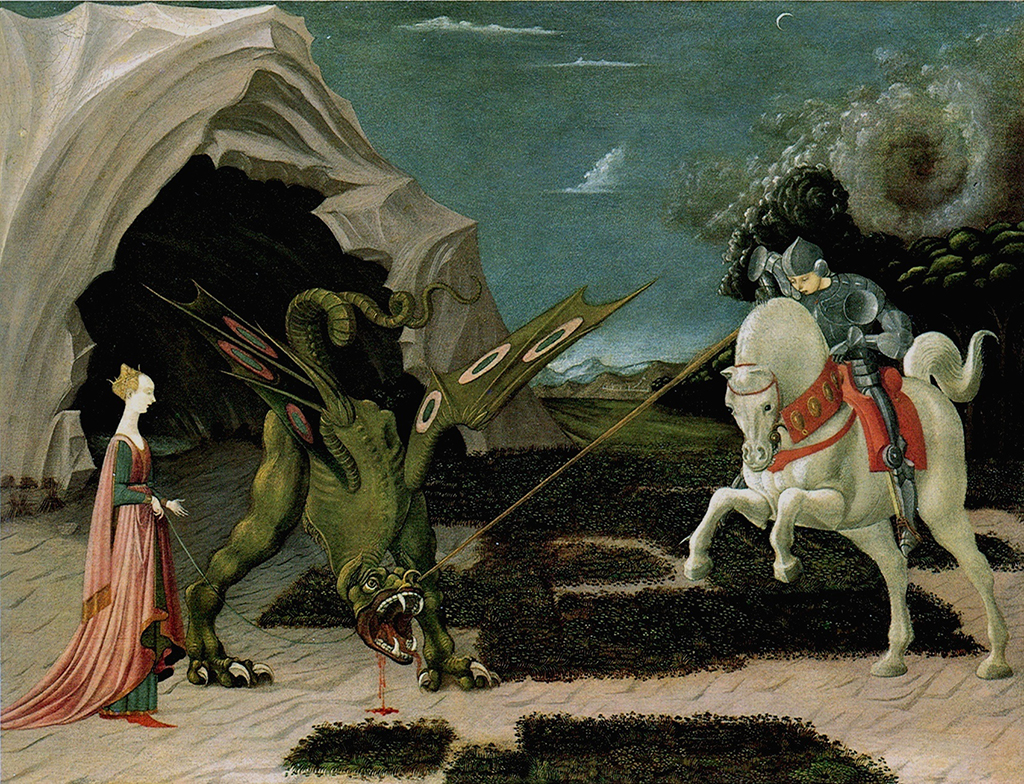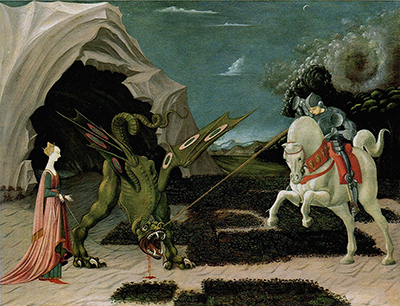The story of Saint George slaying the dragon has been reproduced countless times through many different interpretations. Uccello's iconic painting of this legend is perhaps one of the more unusual images because of the predominantly cool colours and sombre lighting used in the painting.
The lack of shadows detracts from the realism yet the images of the dragon and the horse show great anatomical skill. The princess looks almost calm as she uses her own belt as a leash to ensnare the wounded dragon, and Saint George has an expression of one who might be removing a bothersome insect rather than slaying a fearsome beast. The combination of the colour palette and lack of expressive emotion within the characters creates an almost tableau effect rather than an action scene at what is the crucial moment of the drama, however the composition and the dragon itself create a fine contrast.
The scene is constructed through many dynamic lines which lead the eye up and down in a zigzag journey throughout the painting: from left to right, the graceful folds of (the princess’s dress) lead up to the striking diagonal spread of the wings; the coiling, serpentine tail carries the eye out towards the far distance while the outline of the cave behind brings the eye back down to firmly ground the viewer back in the middle of the action. This continues down the plunging neck of the beast to that terrible, aggressive head, before travelling immediately up the great lance which links the protagonists in the critical moment, and the rearing horse delivers exciting movement which tempts the eye to then replay the scene as it plays out.
Movement is also captured in the exquisite depiction of the storm clouds building behind Saint George, which line up with his lance, representing the divine intervention which enabled him to defeat the dragon. Uccello’s interest in perspective is also present in this painting, notably in the detail on the dragon’s wings and the geometric forms of the turf patches on the ground. Uccello's Saint George and the Dragon was painted in oil on canvas around 1470 and records refer to the painting being housed in the Palais Lanckoronski, Vienna, in 1898. It measures 55.6cm x 74.2cm and is on display in the National Gallery, London.





